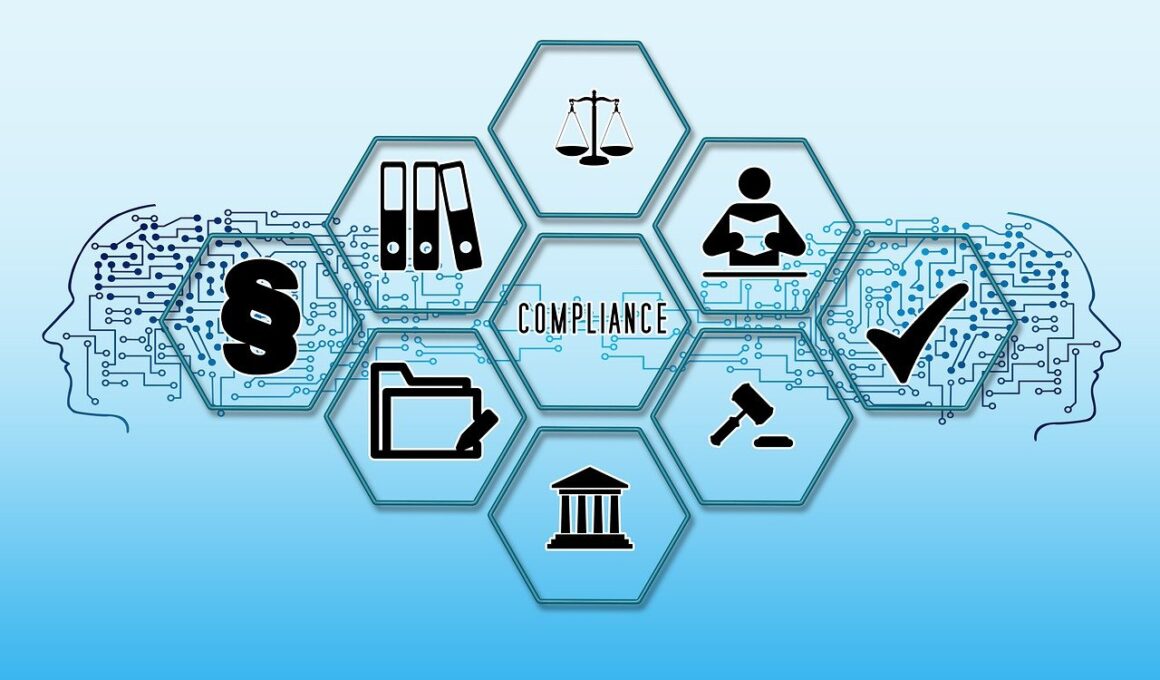Building Resilience Against Regulatory Risks Through HR Training
In today’s rapidly changing financial landscape, effective compliance and regulatory training are essential for human resources in finance. Organizations face increasing scrutiny from regulatory bodies, making it imperative for HR professionals to equip their teams with the knowledge and tools needed to navigate complex regulations successfully. This training should encompass various aspects, including understanding the latest regulatory updates, implementing risk management strategies, and fostering a culture of compliance throughout the organization. Creating a comprehensive training program provides a roadmap for mitigating risks and ensuring that employees are well-versed in the company’s compliance obligations. Furthermore, by investing in such training, organizations not only enhance their operational effectiveness but also build trust with stakeholders, clients, and regulators alike. It’s crucial to tailor these training sessions to the specific needs of the organization, integrating real-life scenarios that the employees may encounter. This proactive approach enables better problem-solving capabilities and helps employees to directly engage with the material. Hence, organizations must prioritize compliance training as part of their overall HR strategy, recognizing it as a critical success factor in today’s regulatory environment.
Moreover, effective compliance and regulatory training programs are dynamic and should evolve with changes in the regulatory landscape. This necessitates regular updates to training materials and sessions, reflecting the latest legal requirements and industry best practices. Additionally, HR professionals should leverage diverse training methodologies, such as workshops, e-learning modules, and interactive case studies to cater to different learning styles. This level of flexibility ensures maximum engagement and retention of information among employees. Learning management systems, for instance, can facilitate ongoing training and allow employees to learn at their own pace, allowing for a blended learning approach that balances efficiency and comprehension. Incorporating behavioral training elements can also help employees recognize and report unethical behaviors, which is integral to fostering a culture of compliance. Furthermore, organizations should encourage open communication regarding compliance concerns and violations. Anonymity in reporting mechanisms can empower employees. Regular feedback and assessments should be conducted to evaluate the effectiveness of training sessions. This data can inform future training initiatives and help identify knowledge gaps, ensuring that organizations remain resilient in the face of regulatory challenges.
The Role of Leadership in Compliance Training
Leadership plays a pivotal role in establishing a strong compliance culture. Leaders set the tone for compliance through their actions and commitment to regulatory training initiatives. When leaders actively participate in training sessions, it sends a clear message about the importance of compliance across all levels of the organization. This visibility not only encourages employees to engage more seriously in compliance training but also demonstrates that compliance is a priority for the entire company, not just a departmental concern. Leaders should also be open to addressing any challenges regarding compliance and providing necessary resources for effective training. They must support HR professionals in designing programs that address real-world risks faced by the organization. Additionally, offering opportunities for leaders to share their experiences and insights can provide valuable perspectives for employees. This two-way communication fosters a collaborative environment where everyone feels responsible for compliance. Overall, when leadership demonstrates a genuine commitment to compliance, it creates a resilient organizational culture that is better equipped to handle regulatory risks and challenges.
Furthermore, creating a culture of accountability within the organization is crucial for the effectiveness of compliance training. Employees should be aware that compliance is not merely a checkbox exercise but part of their daily responsibilities. This can be achieved through the alignment of compliance expectations with performance metrics. For instance, integrating compliance objectives into employees’ performance appraisals can reinforce its significance. HR can implement recognition programs that celebrate employees committing to compliance. Furthermore, consistent messaging about the consequences of non-compliance should be communicated clearly to all employees. By fostering accountability, organizations can encourage employees to take ownership of their roles in compliance. This not only improves individual performance but also contributes to a collective and cohesive approach to risk management. Integrating compliance into the organizational ethos can turn it into a shared responsibility. When employees feel comfortable discussing compliance issues and seeking guidance, the organization becomes more resilient against regulatory risks. Such a proactive stance is crucial for maintaining trust with clients and stakeholders while minimizing potential penalties and legal repercussions resulting from non-compliance.
Benchmarking and Evaluating Training Success
A critical aspect of building resilience against regulatory risks is the evaluation of the training programs’ effectiveness. Organizations must implement robust mechanisms to assess training outcomes continually. This can include pre- and post-training assessments to gauge knowledge retention and behavioral changes among participants. Surveys can also provide insights into employee perceptions and the relevance of the training content. Analyzing these metrics will help organizations identify areas for improvement and refine their training initiatives accordingly. Furthermore, setting clear objectives for training sessions can facilitate better benchmarking against industry standards. HR can collaborate with compliance officers to establish key performance indicators (KPIs) that reflect training success. Monitoring these KPIs over time enables organizations to track progress and make data-driven decisions about future training investments. Additionally, success stories and case studies illustrating the positive impact of training on compliance outcomes can motivate employees to take the training seriously. By creating a feedback loop, organizations can ensure that compliance training remains relevant, effective, and aligned with the expectations of regulators and industry benchmarks.
In addition, leveraging technology can enhance the effectiveness of compliance and regulatory training significantly. Learning management systems (LMS) can streamline the administration of training programs, making it easier to track progress and compliance. Technologies such as artificial intelligence and machine learning can also personalize the learning experience, allowing for adaptive training paths based on individual employee needs and performance. This not only enhances engagement but also ensures that employees receive the support they need to fully understand compliance requirements. Moreover, virtual reality (VR) and simulation tools can provide immersive training experiences that bring regulatory scenarios to life, enabling employees to practice responses in a safe environment. These technological advancements can make compliance training more interactive and impactful, driving better knowledge retention and application. Furthermore, by investing in the right technology solutions, organizations can create a more robust training infrastructure. This proactive investment supports organizational resilience against regulatory risks and positions the company as a leader in compliance practices within the finance sector, providing a competitive edge over peers.
Wrapping Up Compliance Training Initiatives
Ultimately, building resilience against regulatory risks through effective HR training requires a multi-faceted approach. Organizations must prioritize continuous improvement of training programs and foster a culture that values compliance as integral to its success. This means remaining vigilant about updates in regulations and proactively responding to changes that impact the financial services industry. Regular audits and assessments can serve as checkpoints that ensure compliance training remains robust and relevant over time. By promoting a culture of accountability, establishing solid leadership support, leveraging technology, and regularly evaluating training effectiveness, organizations can strengthen their compliance frameworks. Moreover, employees should feel empowered to voice concerns and seek guidance when facing dilemmas related to compliance. This open communication can significantly reduce risks associated with compliance failures. In conclusion, prioritizing compliance and regulatory training is not just about fulfilling legal obligations; it significantly enhances organizational resilience, maintains stakeholder trust, and drives long-term success in the competitive finance industry. Investing time and resources into building such capabilities is undeniably the hallmark of a resilient organization.
In summary, regulatory risks can significantly impact an organization’s reputation and financial standing. Therefore, implementing robust compliance training programs is paramount for organizational success. Organizations that instill a culture of compliance will not only adhere to laws but also promote ethical decision-making among employees. Providing continuous education in this regard will help develop skills that can prevent regulatory breaches. Furthermore, fostering collaboration between departments, including compliance, operations, and human resources, can optimize training efforts by sharing insights and resources. By leveraging the collective expertise of employees, companies can craft more comprehensive compliance training content that resonates with everyone in the organizational structure. This approach can lead to the development of innovative solutions to compliance challenges. It’s also essential for organizations to conduct post-training evaluations frequently to assess the effectiveness of their programs. These evaluations will allow organizations to make the necessary adjustments to their training initiatives. With an emphasis on continuous improvement, organizations can strengthen their compliance training strategies over time. As a result, all employees become advocates for regulatory compliance, ensuring the longevity and integrity of the organization in an increasingly complex financial environment.


